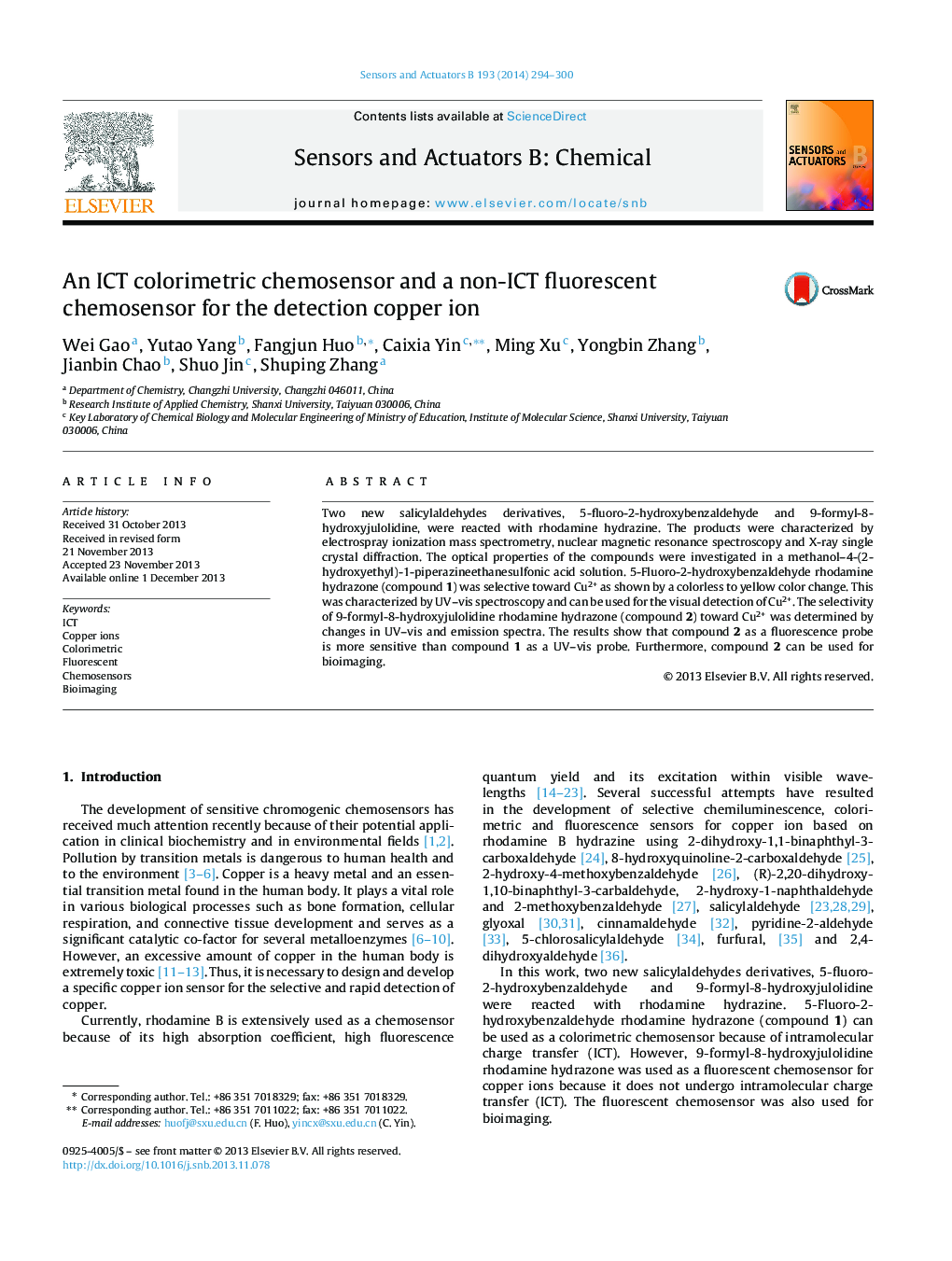| Article ID | Journal | Published Year | Pages | File Type |
|---|---|---|---|---|
| 740074 | Sensors and Actuators B: Chemical | 2014 | 7 Pages |
Two new salicylaldehydes derivatives, 5-fluoro-2-hydroxybenzaldehyde and 9-formyl-8-hydroxyjulolidine, were reacted with rhodamine hydrazine. The products were characterized by electrospray ionization mass spectrometry, nuclear magnetic resonance spectroscopy and X-ray single crystal diffraction. The optical properties of the compounds were investigated in a methanol–4-(2-hydroxyethyl)-1-piperazineethanesulfonic acid solution. 5-Fluoro-2-hydroxybenzaldehyde rhodamine hydrazone (compound 1) was selective toward Cu2+ as shown by a colorless to yellow color change. This was characterized by UV–vis spectroscopy and can be used for the visual detection of Cu2+. The selectivity of 9-formyl-8-hydroxyjulolidine rhodamine hydrazone (compound 2) toward Cu2+ was determined by changes in UV–vis and emission spectra. The results show that compound 2 as a fluorescence probe is more sensitive than compound 1 as a UV–vis probe. Furthermore, compound 2 can be used for bioimaging.
Graphical abstractAn ICT colorimetric chemosensor and a non-ICT fluorescent chemosensor were used to detect copper ion.Figure optionsDownload full-size imageDownload as PowerPoint slide
